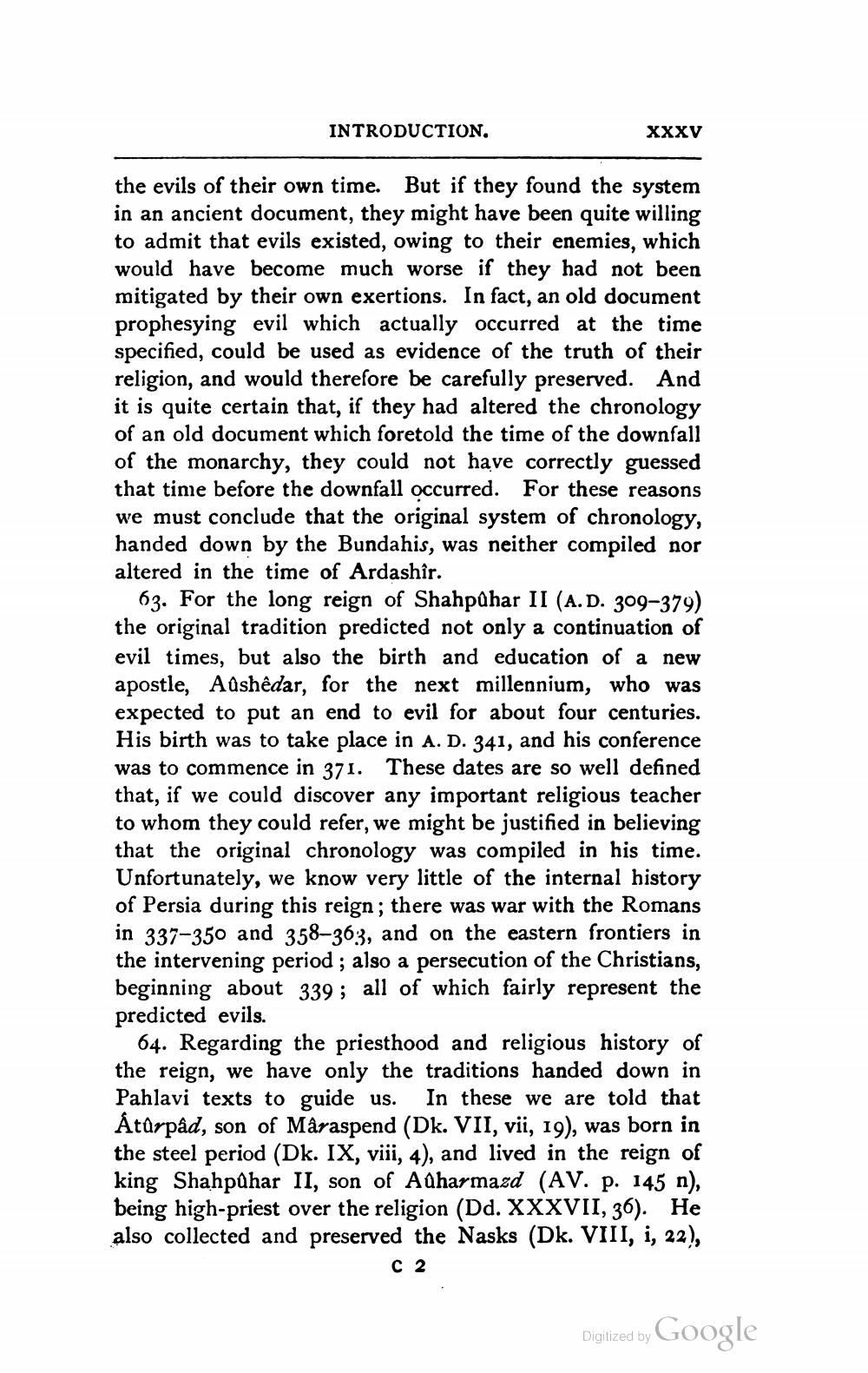________________
INTRODUCTION.
XXXV
the evils of their own time. But if they found the system in an ancient document, they might have been quite willing to admit that evils existed, owing to their enemies, which would have become much worse if they had not been mitigated by their own exertions. In fact, an old document prophesying evil which actually occurred at the time specified, could be used as evidence of the truth of their religion, and would therefore be carefully preserved. And it is quite certain that, if they had altered the chronology of an old document which foretold the time of the downfall of the monarchy, they could not have correctly guessed that time before the downfall occurred. For these reasons we must conclude that the original system of chronology, handed down by the Bundahis, was neither compiled nor altered in the time of Ardashîr.
63. For the long reign of Shahpühar II (A.D. 309-379) the original tradition predicted not only a continuation of evil times, but also the birth and education of a new apostle, Aushedar, for the next millennium, who was expected to put an end to evil for about four centuries. His birth was to take place in A. D. 341, and his conference was to commence in 371. These dates are so well defined that, if we could discover any important religious teacher to whom they could refer, we might be justified in believing that the original chronology was compiled in his time. Unfortunately, we know very little of the internal history of Persia during this reign; there was war with the Romans in 337–350 and 358–363, and on the eastern frontiers in the intervening period ; also a persecution of the Christians, beginning about 339; all of which fairly represent the predicted evils.
64. Regarding the priesthood and religious history of the reign, we have only the traditions handed down in Pahlavi texts to guide us. In these we are told that Aturpâd, son of Mâraspend (Dk. VII, vii, 19), was born in the steel period (Dk. IX, viii, 4), and lived in the reign of king Shahpahar II, son of Adharmazd (AV. p. 145 n), being high-priest over the religion (Dd. XXXVII, 36). He also collected and preserved the Nasks (Dk. VIII, i, 22),
C2
Digitized by Google




